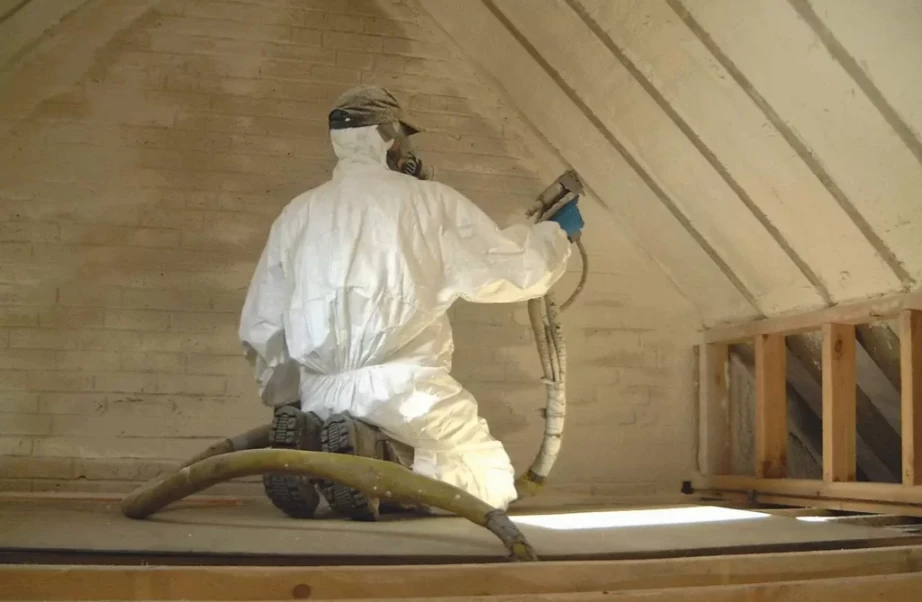
Spray foam insulation has gained popularity due to its ability to provide excellent thermal resistance and airtight sealing. However, like any construction material, it has its drawbacks. Homeowners and contractors in Oklahoma City, OK, should be aware of these potential issues before deciding to use spray foam insulation in their properties. This article explores the disadvantages of spray foam insulation, offering an in-depth look at its costs, health risks, environmental concerns, and installation challenges.
Compared to traditional insulation options such as fiberglass and cellulose, spray foam insulation comes with a higher upfront cost. The material itself is more expensive, and professional installation adds to the overall expense. The cost of spray foam insulation can range between $1.50 to $3.50 per square foot, depending on the type used and the complexity of the project.
Although spray foam insulation promises energy savings, homeowners may take years to see a return on their investment. The high upfront costs may not always justify the potential savings, especially in areas with moderate climates where heating and cooling expenses are lower.
Spray foam insulation contains isocyanates and polyols, which, when mixed, create a chemical reaction that expands into foam. Isocyanates can cause respiratory issues, skin irritation, and other health problems if inhaled or if they come into contact with the skin during installation.
After installation, spray foam continues to off-gas volatile organic compounds (VOCs), which can lead to eye irritation, headaches, and respiratory discomfort. In poorly ventilated areas, these fumes may linger longer, affecting indoor air quality.
While spray foam insulation can be treated with flame retardants, it is still a combustible material. In case of a fire, it can release toxic smoke, which can be dangerous for occupants and firefighters.
Unlike fiberglass batts or blown-in insulation, spray foam requires a professional application. The installation process involves specialized equipment and training, making DIY applications nearly impossible.
Once applied, spray foam expands rapidly and hardens. If improperly installed, it can create uneven surfaces, air pockets, or excess buildup, leading to wasted material and reduced efficiency. Additionally, removing or replacing spray foam insulation is difficult and often requires complete demolition of the affected area.
Spray foam insulation is marketed as moisture-resistant, but improper installation can lead to moisture retention within walls. When this happens, mold and mildew can grow, causing structural damage and health concerns.
Spray foam insulation is made from petrochemicals, making it a non-biodegradable material. Once installed, it remains in the structure indefinitely, contributing to long-term waste issues when buildings are renovated or demolished.
The manufacturing of spray foam insulation involves the use of hydrofluorocarbons (HFCs), which are potent greenhouse gases. Some formulations have transitioned to low-GWP (global warming potential) alternatives, but the environmental impact remains a concern.
Unlike fiberglass or cellulose insulation, spray foam is difficult to recycle. It cannot be repurposed easily, and disposal methods often involve landfilling, which contributes to environmental pollution.
Spray foam adheres to most surfaces, but in some cases, it can react negatively with certain roofing materials, electrical wiring, and vapor barriers. This can lead to unforeseen complications and repair costs.
Over time, spray foam insulation may shrink or crack, especially if it is not installed properly. This can result in air leaks and reduced insulation efficiency, defeating the purpose of its application.
In roofing applications, spray foam can cause moisture retention, leading to rot and structural deterioration. Similarly, in foundation applications, improperly applied foam may lead to trapped moisture, which could compromise the foundation’s integrity.
For homeowners and builders in Oklahoma City, OK, exploring alternatives to spray foam insulation may be beneficial. Some options include:
While spray foam insulation offers energy efficiency and airtight sealing, it has notable downsides, including high costs, health risks, installation complexities, and environmental concerns. Homeowners and contractors in Oklahoma City, OK, should weigh these factors carefully before choosing spray foam for their insulation needs.
For those considering insulation options, consulting professionals can help determine the best material for a property. Supreme Spray Foam of OKC offers expert guidance to ensure an informed decision. Contact them today for more information on insulation solutions that fit your budget and requirements.
Spray foam insulation is generally safe once fully cured, but improper installation and off-gassing can pose health risks.
It can last over 50 years if properly installed, but factors like climate, moisture, and structural shifts can affect longevity.
If installed improperly, spray foam can trap moisture, creating a favorable environment for mold growth.
Yes, poor installation and extreme temperature changes can cause shrinkage or cracks, leading to air leaks.
Spray foam has a high carbon footprint and is non-biodegradable, making it less eco-friendly than some alternative insulation materials.
Yes, but removal is difficult and costly, often requiring the demolition of affected areas.
During installation, off-gassing VOCs can reduce air quality. Proper ventilation is crucial to minimize exposure.
Spray foam is combustible and can release toxic fumes when exposed to fire, necessitating additional flame retardants.
It depends on energy savings, installation quality, and the homeowner’s budget. The ROI may take years to materialize.
DIY installation is not recommended due to the complex application process and health risks.